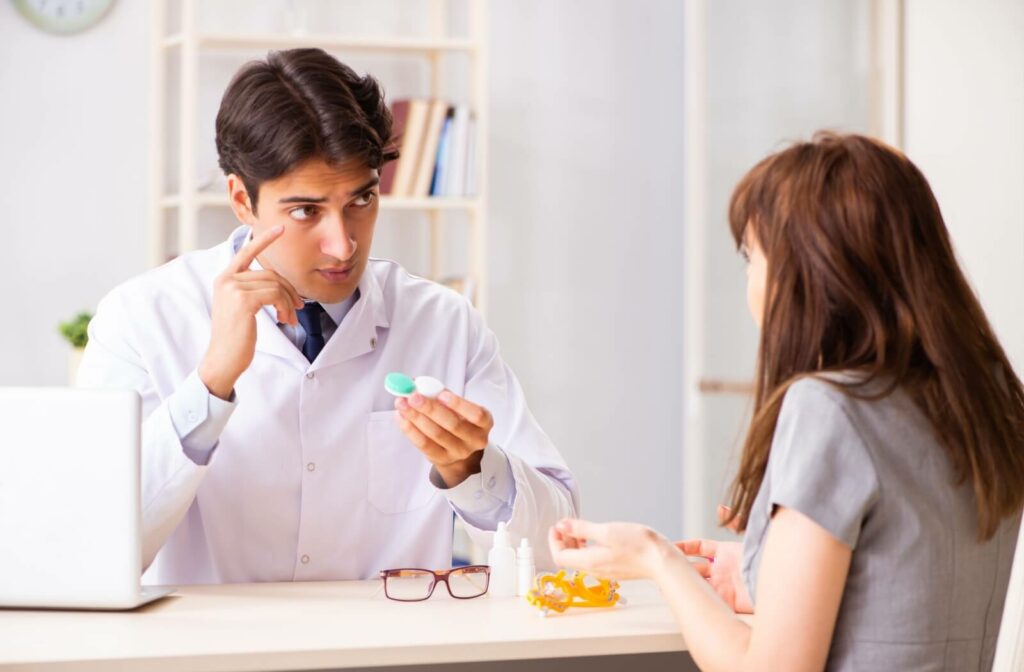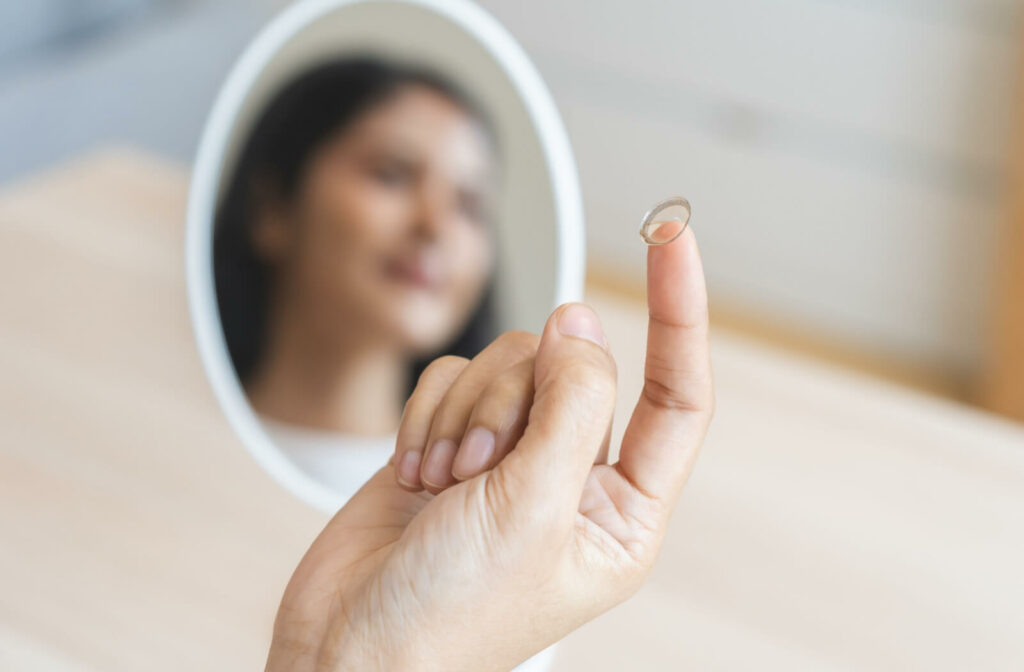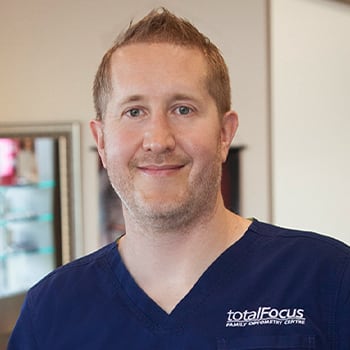Getting your first pair of contact lenses is an exciting milestone!
The freedom to play sports without worrying about glasses sliding down your nose, the convenience of seeing clearly without frames in your peripheral vision, and the confidence boost that comes with your natural look—it’s all within reach. But before you can enjoy these benefits, you’ll need a contact lens eye exam and fitting.
During this visit, your optometrist will measure your eyes and evaluate their health to determine an accurate lens prescription. If you’re new to contact lenses, your optometrist will go over proper contact lens handling and teach you how to carefully insert and remove your lenses.
Whether you’re a contact lens pro or new to the scene, don’t skip out on your annual contact lens exam and fitting.
Reviewing Eye Health & Lifestyle
A contact lens exam builds on a routine eye exam. It’s still a comprehensive visit that evaluates your vision and eye health, but with a few extra (and important) components.
To get started, we need some insight into what your day-to-day is like. If you spend hours on the computer and your eyes get dry, daily contact lenses can help keep your eyes hydrated. Or, if you prefer wearing contacts every day, monthly lenses are an affordable option.
Vision testing helps determine whether you need specialty lenses, like toric (for astigmatism) or multifocal (for presbyopia) contacts. After all, your lenses are intended to correct your vision, and it’s up to us to find an accurate contact lens and glasses prescription.
Corneal Health Assessment
Before we fit you with contact lenses, we have to make sure your eyes are healthy enough to wear contact lenses.
We use a slit lamp to look for any signs of inflammation, infection, or other conditions that might make contact lens wear unsafe or uncomfortable. We’ll also check for dry spots on your cornea or irregularities in its surface that could affect lens fit.
Your tear film quality is also important. We might perform tests to measure how quickly your tears evaporate or how well they coat your cornea. Healthy tears are essential for comfortable contact lens wear, as they provide lubrication and help maintain clear vision.
Corneal Measurements
We turn to keratometry to determine your cornea’s size and shape—a crucial aspect of any contact lens fitting. This instrument measures the curvature of your cornea’s front surface and helps determine the base curve of your contact lens.
The cornea is like a dome. Some people have steeper domes, while others have flatter ones. Contact lenses must match this curvature closely enough to move properly with each blink while still maintaining a good centre over your pupil.
We will also measure your corneal diameter and pupil size under different lighting conditions. This helps make sure your contact lenses provide enough coverage and won’t cause visual disturbances, especially in low-light situations.
Having astigmatism usually comes with additional measurements called topography. This creates a detailed map of the cornea’s front surface and helps your eye doctor fit you with the right toric contact lenses.
Contact Lens Selection & Trial Fitting
After taking all these measurements and tests into consideration, we’ll select trial lenses for you to sample.
After inserting the trial lenses, give 10 to 15 minutes for them to settle in. Your eyes will produce enough tears to adjust to this new sensation. Then, we’ll use a slit lamp to evaluate the lens fit, checking for proper movement, alignment, and coverage.
With each blink, your contact lens should move slightly, allowing fresh tears to flow underneath and waste products to flush away. Lenses that move too much can cause discomfort and unstable vision, while lenses that don’t move enough can restrict oxygen flow and lead to complications.

Education & Training Session
If you’re wearing contacts for the first time or switching to a different lens type, we’ll teach you everything you need to know about safe contact lens wear and care.
This hands-on training covers proper insertion and removal techniques, which can be challenging for first-time wearers. You’ll practice these skills under supervision until you feel confident handling your lenses independently. Don’t worry if it takes several attempts—most people need practice to master these techniques.
You’ll also learn about proper lens care, including cleaning, disinfecting, and storage procedures, which are essential for preventing eye infections and maintaining comfortable wear.
Vision Assessment with Trial Lenses
We’ll also assess how your lenses affect your vision at different distances and under various lighting conditions (as contact lenses can sometimes cause visual disturbances like halos or glare around lights).
We might have you read eye charts, look at nearby objects, or perform other visual tasks to verify that your lenses provide clear, comfortable vision for your daily activities.
Follow-Up Care & Monitoring
Your contact lens journey doesn’t end when you leave the office with your new lenses. Most optometrists schedule follow-up appointments to see how well you and your eyes are adjusting to the new lenses.
The first follow-up typically occurs within a week or two of your initial fitting. We’ll
evaluate how your eyes are responding to the lenses, check for any signs of irritation or complications, and address any concerns you might have.
If everyone is happy with how the contacts look and feel, you’re ready to go! We’ll finalize your contact lens prescription (valid for a year), and you’re set to order a supply. Otherwise, we can always try another pair of contacts and go from there. After all, this is what the trial period is for!
Your Path to Clear, Comfortable Vision
All the detail and care that goes into a contact lens exam is done with one goal in mind: making sure your contact lenses fit comfortably and give you solid visual clarity. The extra time spent during the appointment is well worth it, confirming successful contact lens wear.
If you’re running low on your lens supply or ready to explore the convenience of contacts, connect with Total Focus Optometry to book your contact lens exam and fitting. The path to clear, comfortable vision is closer than you think.




